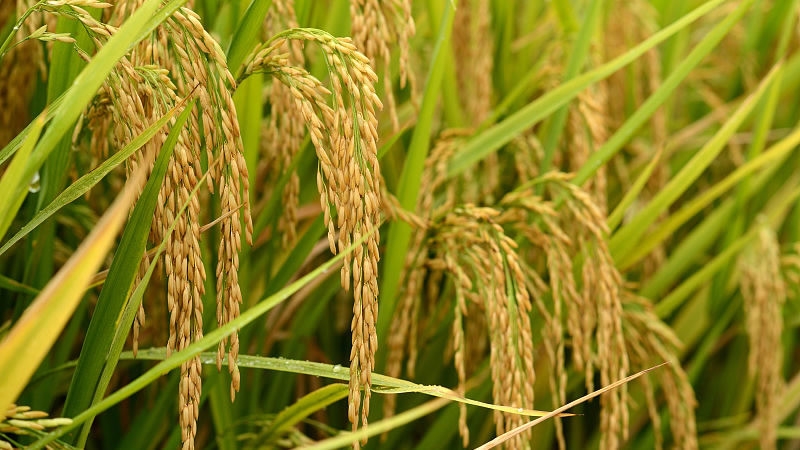(单词翻译:单击)
Chinese scientists have found a gene which plays an important role in helping rice, originating in warm southern China, expand to the relatively cold northern regions.
近日,中国科学家发现了一种基因,它在帮助发源于温暖的中国南方的水稻向相对寒冷的北方地区扩展方面发挥了重要作用。
Rice grown in Asia include two subspecies, indica rice and japonica rice. The heat-resistant indica rice is mainly planted in southern China, as well as the tropical and subtropical areas in South Asia and Southeast Asia.
亚洲种植的水稻有两种亚种,籼稻和粳稻。耐热籼稻主要种植在中国南方以及南亚和东南亚的热带和亚热带地区。
While the japonica rice, after nearly 10,000 years of domestication and selection, can tolerate cold weather and has been expanded to northern China and the temperate zones in Northeast Asia.
而粳稻稻米经过近10000年的培育和选择,可以忍受寒冷的天气,已经扩展到中国北部和东北温带亚洲。

After analyzing 202 rice samples from various growing regions around the world collected by the Department of Agriculture of the United States, Chinese researchers at the Institute of Genetics and Development Biology of the Chinese Academy of Sciences identified a gene, bZIP73, associated with cold tolerance.
中国科学院遗传与发展生物学研究所的研究人员在分析了美国农业部收集的来自世界各地不同种植地区的202份水稻样品后,发现了一种与耐寒有关的基因bZIP73。
The researchers believe the gene has facilitated the adaptation of rice to low temperatures.
研究人员认为,这种基因有助于水稻适应低温环境。
Rice is one of the most important cereal crops feeding more than half of the world's population.
水稻是世界上最重要的谷类作物之一,养活了全球一半以上的人口。
Cold stress is a major factor limiting production and geographic distribution of rice, said Chu Chengcai, a lead scientist in the research.
这项研究的首席科学家储成才表示,冷应力是限制水稻产量和地理分布的一个主要因素。
The discovery may help breed new rice varieties which can grow in high latitude and high altitude regions, Chu said.
储成才称,这一发现可能有助于培育新的水稻品种,这些水稻品种可以在高纬度和高海拔地区生长。


